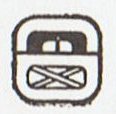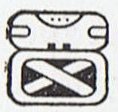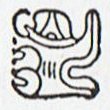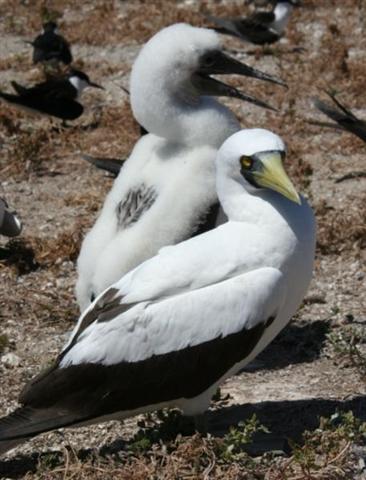7. The black iridiscent plumage of the Raven probably corresponds to the dark of the winter season, which can be said to begin around autumn equinox. The Mayas had an owl (Moan) as a similar time sign:
Although Gates (William Gates in his An Outline Dictionary of Maya Glyphs) is of another opinion: "Six glyphs at least are clearly pictographic in base: Pop, mat; Sotz, bat; Xul, ?; Kankin, skeleton ribs; Moan, falcon; Kayab, turtle." My statement of an owl is based on a picture from David Humiston Kelley's Deciphering the Maya Script, in which a Muan bird is explained as an owl, and I tend to equate Moan with Muan. Owls and bats avoid the daylight. The following is a part from my preliminary glyph type dictionary:
Another alternative is to see a vulture in the Moan bird, a natural idea because Kankin is the place of a skeleton. According to mythology the obviously correct place for a slowly circulating vulture should be in the west, whereas a quickly darting falcon should be in the east. The colours of birds are significant. We can remember Robert Graves' interpretation of the black-and-white of the magpie: ... Day of the Winter Solstice - A - aidhircleóg, lapwing; alad, piebald. Why is the Lapwing at the head of the vowels? Not hard to answer. It is a reminder that the secrets of the Beth-Luis-Nion [the ABC of the pre-latin Ogham alphabet] must be hidden by deception and equivocation, as the lapwing hides her eggs. And Piebald is the colour of this mid-winter season when wise men keep to their chimney-corners, which are black with soot inside and outside white with snow; and of the Goddess of Life-in-Death and Death-in-Life, whose prophetic bird is the piebald magpie ... (cfr at Kara Etahi) On Easter Island it could have been a kena instead of a magpie (cfr at Makoi's List of Place Names):
|



















